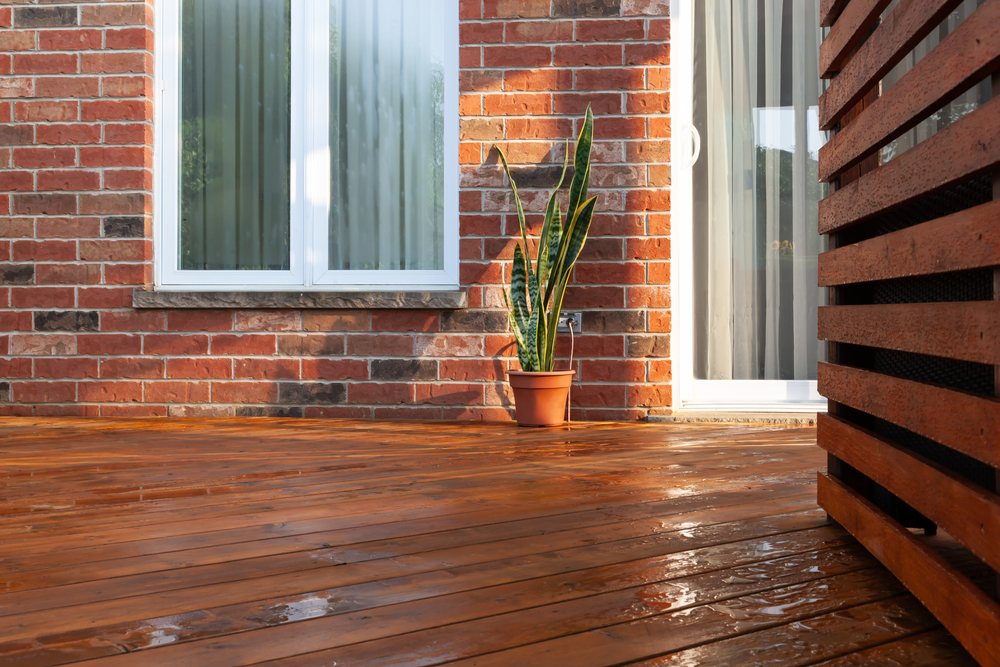
Let’s explore the concept of pressure treatment, why it is necessary, and the advantages it offers. We'll also delve into the importance of staining and sealing outdoor wood such as decks and fences, despite their initial treatment. Let's dive in!
Understanding Pressure Treatment:
Pressure treatment is a process employed to enhance the durability and longevity of wood when exposed to the elements. During this treatment, wood is placed inside a large vessel where it is subjected to a combination of pressure and chemical preservatives. This process enables the preservatives to penetrate deep into the wood fibers, providing protection against decay, rot, insect damage, and fungal growth.
Why is Pressure Treatment Necessary?
Wood is a natural material that, when used outdoors, is susceptible to various environmental factors that can cause it to deteriorate over time. Exposure to moisture, sunlight, insects, and fungi are primary culprits. Pressure treatment offers an effective solution by impregnating the wood with preservatives that mitigate these risks. Treated wood can withstand harsh weather conditions, resist insect infestations, and maintain its structural integrity for an extended period.
Advantages of Pressure-Treated Wood:
1️⃣ Enhanced Durability: Pressure-treated wood boasts increased resistance to decay, rot, and insect damage. This makes it an excellent choice for outdoor projects that require long-lasting performance, such as decks, fences, and pergolas.
2️⃣ Cost-Effective: While pressure-treated wood may initially be slightly more expensive than untreated wood, its increased durability and longevity make it a cost-effective option in the long run. You'll save on maintenance, repairs, and potential replacement costs.
3️⃣ Versatility: Treated wood can be used in various outdoor applications, from decking and fencing to gazebos and retaining walls. Its versatility makes it a preferred material for both residential and commercial projects.
4️⃣ Wide Availability: Pressure-treated wood is readily available in most lumberyards and home improvement stores, making it easily accessible to consumers for their outdoor construction needs.
The Role of Staining and Sealing:
Despite the protective benefits of pressure treatment, it is still necessary to stain and seal outdoor wood, including decks and fences. Here's why:
1️⃣ UV Protection: The sun's ultraviolet (UV) rays can cause wood to fade, turn gray, and develop cracks. Stains with UV-blocking properties shield the wood from the damaging effects of sunlight, preserving its color and appearance.
2️⃣ Moisture Control: Staining and sealing form a barrier on the wood's surface, preventing excessive moisture absorption. This barrier helps to minimize warping, swelling, and cracking caused by exposure to rain, snow, and humidity.
3️⃣ Added Aesthetic Appeal: Stains come in a variety of colors, allowing you to enhance the natural beauty of the wood or change its appearance to match your outdoor décor. Sealing the wood gives it a polished look while providing a smooth surface for easy cleaning.
4️⃣ Longevity: Regularly staining and sealing your outdoor wood surfaces extend their lifespan. By protecting the wood from moisture, UV rays, and general wear and tear, you'll enjoy your deck or fence for many more years to come.
In Conclusion:
Pressure treatment is a vital step in ensuring the durability of outdoor wood, protecting it from decay, insects, and fungal growth. However, staining and sealing are equally crucial to maintaining the wood's appearance, protecting it from UV damage, and extending its lifespan. By combining pressure treatment with staining and sealing, you'll enjoy the beauty and functionality of your outdoor wood projects for years to come.
We hope this article has provided you with valuable insights into the world of treated wood for outdoor use. If you have any further questions or need assistance with your outdoor wood projects, feel free to reach out to Deck Medic of Lake Norman!
